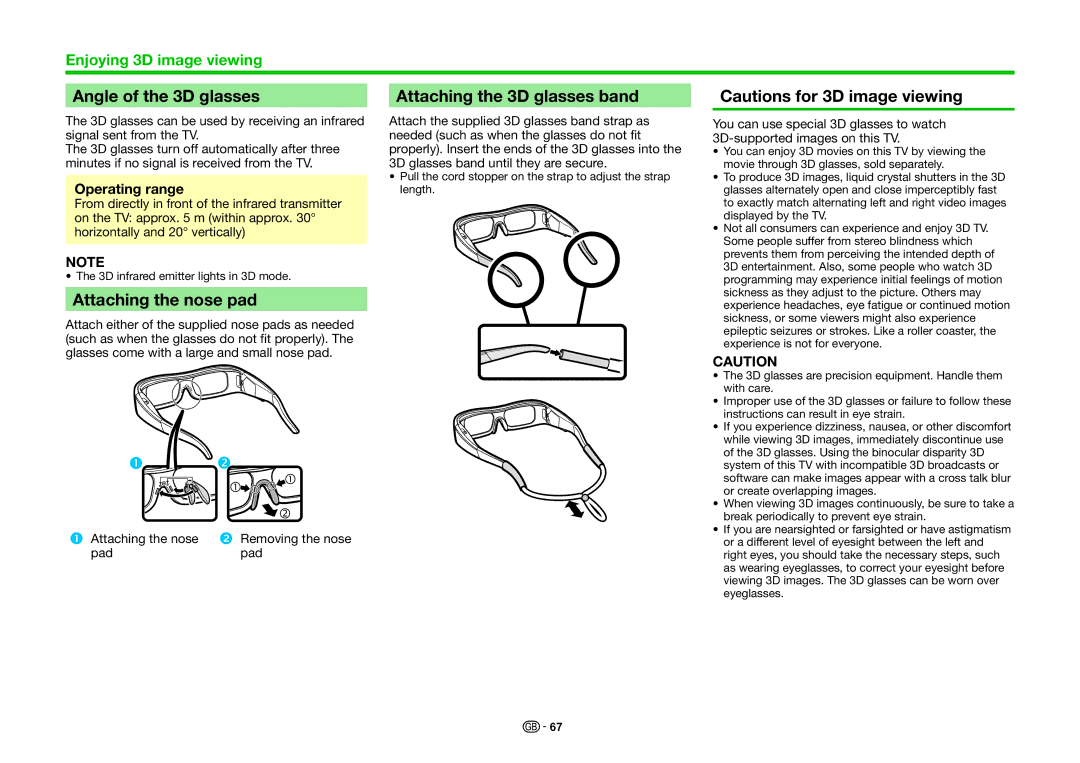
Enjoying 3D image viewing
Angle of the 3D glasses
The 3D glasses can be used by receiving an infrared signal sent from the TV.
The 3D glasses turn off automatically after three minutes if no signal is received from the TV.
Operating range
From directly in front of the infrared transmitter on the TV: approx. 5 m (within approx. 30° horizontally and 20° vertically)
NOTE
• The 3D infrared emitter lights in 3D mode.
Attaching the nose pad
Attach either of the supplied nose pads as needed (such as when the glasses do not fit properly). The glasses come with a large and small nose pad.
Attaching the nose | Removing the nose |
pad | pad |
Attaching the 3D glasses band
Attach the supplied 3D glasses band strap as needed (such as when the glasses do not fit properly). Insert the ends of the 3D glasses into the 3D glasses band until they are secure.
•Pull the cord stopper on the strap to adjust the strap length.
Cautions for 3D image viewing
You can use special 3D glasses to watch
•You can enjoy 3D movies on this TV by viewing the movie through 3D glasses, sold separately.
•To produce 3D images, liquid crystal shutters in the 3D glasses alternately open and close imperceptibly fast to exactly match alternating left and right video images displayed by the TV.
•Not all consumers can experience and enjoy 3D TV. Some people suffer from stereo blindness which prevents them from perceiving the intended depth of 3D entertainment. Also, some people who watch 3D programming may experience initial feelings of motion sickness as they adjust to the picture. Others may experience headaches, eye fatigue or continued motion sickness, or some viewers might also experience epileptic seizures or strokes. Like a roller coaster, the experience is not for everyone.
CAUTION
•The 3D glasses are precision equipment. Handle them with care.
•Improper use of the 3D glasses or failure to follow these instructions can result in eye strain.
•If you experience dizziness, nausea, or other discomfort while viewing 3D images, immediately discontinue use of the 3D glasses. Using the binocular disparity 3D system of this TV with incompatible 3D broadcasts or software can make images appear with a cross talk blur or create overlapping images.
•When viewing 3D images continuously, be sure to take a break periodically to prevent eye strain.
•If you are nearsighted or farsighted or have astigmatism or a different level of eyesight between the left and right eyes, you should take the necessary steps, such as wearing eyeglasses, to correct your eyesight before viewing 3D images. The 3D glasses can be worn over eyeglasses.
![]()
![]() 67
67
